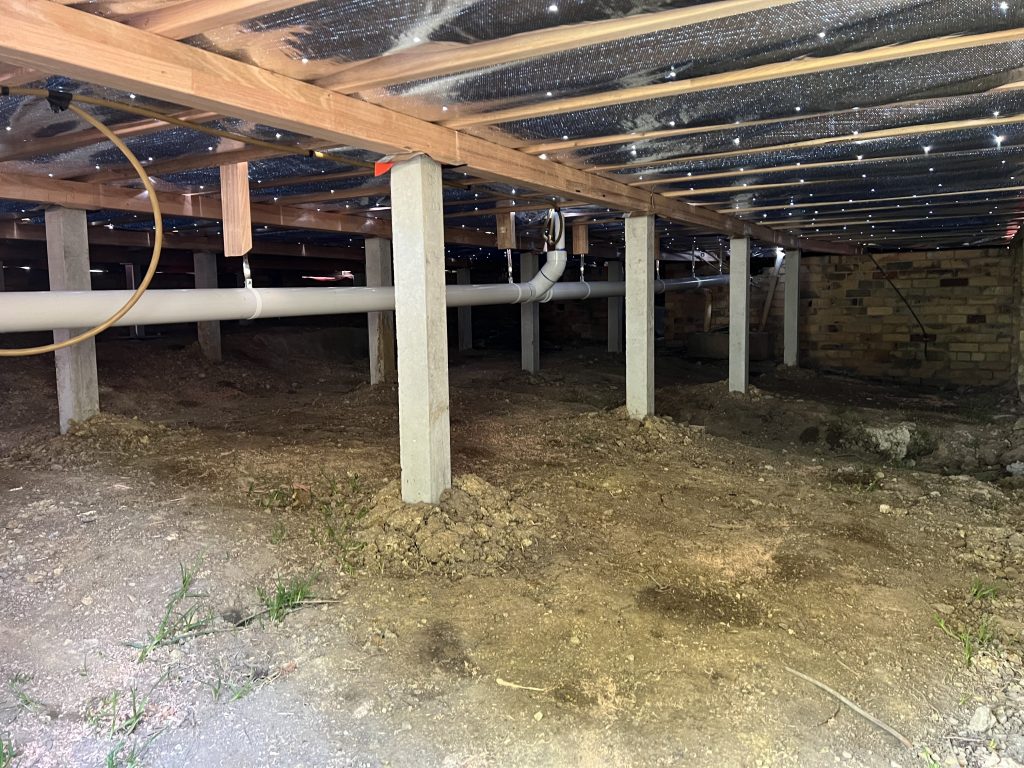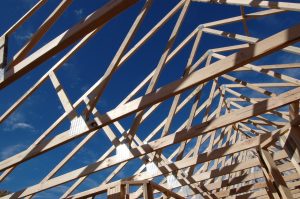Stumps vs concrete slab. This question might have you scratching you’re head, as deciding on the house foundations may not be the most exciting part of house construction, but it’s definitely one of the most important.
Whether you just purchased a new lot or chose to knock down and rebuild, you should take the time to properly assess your options. For this post, we’ll discuss the pros and cons of a stump foundation for your new home.
The Advantages of Building a House on Stumps
1.It works well on slopes
At Capital Building, we have seen a range of our clients build their homes on slopes or uneven ground, not only for the spectacular panoramic views, but also to get away from the hustle and bustle of city life. A problem they usually encounter, however, is finding a level ground to build on.
In this scenario, a stump footing design will work wonders! Each of the stumps can be made into different lengths, making it a great choice for a sloping site, as it allows you to have a perfectly level home that also permits surface water to pass through quickly, effectively avoiding flooding. Other benefits include:
-
- Placement without excavation, which can offer considerable cost savings on sloping sites.
-
- Elevating the house for a better view, or creating under-house storage, rainwater tanks and so on.
-
- More forgiving to minor movement or settlement of a house over time, whereas a slab will exhibit cracking which can let in moisture, pests or look unsightly in the case of polished concrete floors.
-
- Old timber stumps can be replaced, relatively cheaply and permanently for renovation.
-
- Stumps, bearers and joists are more environmentally sustainable than concrete, even though concrete suppliers are working hard with innovations such as fly ash to reduce cement content and produce lower emissions cement.
2.It makes home renovations easier
Contractors and their teams can cause significant disruptions to your daily life. Often, many homeowners actually delay much-needed repairs because of this reason, perhaps waiting for periods when not a lot of people will be at home.
Fortunately, in a house with a stump footing design, the cables, wiring, and pipes are normally under the flooring. This makes it easier for a technician to examine and solve many problems while you carry on with your daily routine. And because your water pipes are more accessible, any issue with those could be repaired at a cheaper rate.
3.Concrete Stumps last forever
When you think of stumps, you might be thinking of the old-fashioned timber stumps that were popular up until the late 1970s. Stump foundations subsequently lost their popularity to concrete slabs because of the stability the latter provides.
To address durability, and strength issues, concrete stumps on concrete pads are now used instead of redgum stumps. Apart from offering more support, concrete stumps can also withstand the soil moisture changes that once caused rot and settlement to the old timber stumps.
Slabs also last forever!
4.Greater Heat Dissipation, Shading & Ventilation
In warm and tropical climates (where the thermal mass of a slab is not desirable), the timber subfloor provides more opportunities for heat dissipation, shading and ventilation.
The Disadvantages of Building a House on Stumps
1.It’s not as cost-effective
If we are going to look at the advantages of building a house on stumps, we must, too, cover some of the disadvantages. Most notably, when it comes to stumps vs slab, the latter has been the cheaper option. Constructing a stump foundation is more labour-intensive, thus costing more than its slab counterpart.
However, with recent price rises in concrete the difference is not much if anything.
Stumps require more insulation (in cooler climates) and subfloor cladding materials which add to the price depending on the height the floor is off the ground level. Slabs provide thermal mass, leaving less insulation required in cooler climates.
Where there are planning height restrictions, stumps are also often a disadvantage to attaining higher ceiling heights. A slab can add another ½ a metre to your potential ceiling heights. In addition, Slabs being closer to the ground level are more accessible for disabled and aged people.
2.The timber floors may not feel as solid
Although some people appreciate how timber floors feel ‘softer’, some people just prefer the solidity concrete offers.
3.It requires more insulation
Compared to concrete slabs, stumps require more attention in order to achieve the minimum insulation requirements. You may need extra work completed on the subfloor to ensure that your home is up to code.
A slab foundation doesn’t share this issue. The nature of the foundation, as well as the material itself, means you can achieve higher energy ratings more easily.
Stumps vs Concrete Slab: Which Should You Choose?
Although it’s more common now to use slabs as a foundation option, a stump foundation can still be a solid choice for your home. To learn more, speak with a member of our experienced team of professionals at Capital Building today, and we can assess your site to provide an expert opinion on what would be the best option for your project. Call (03) 9857 9200.




